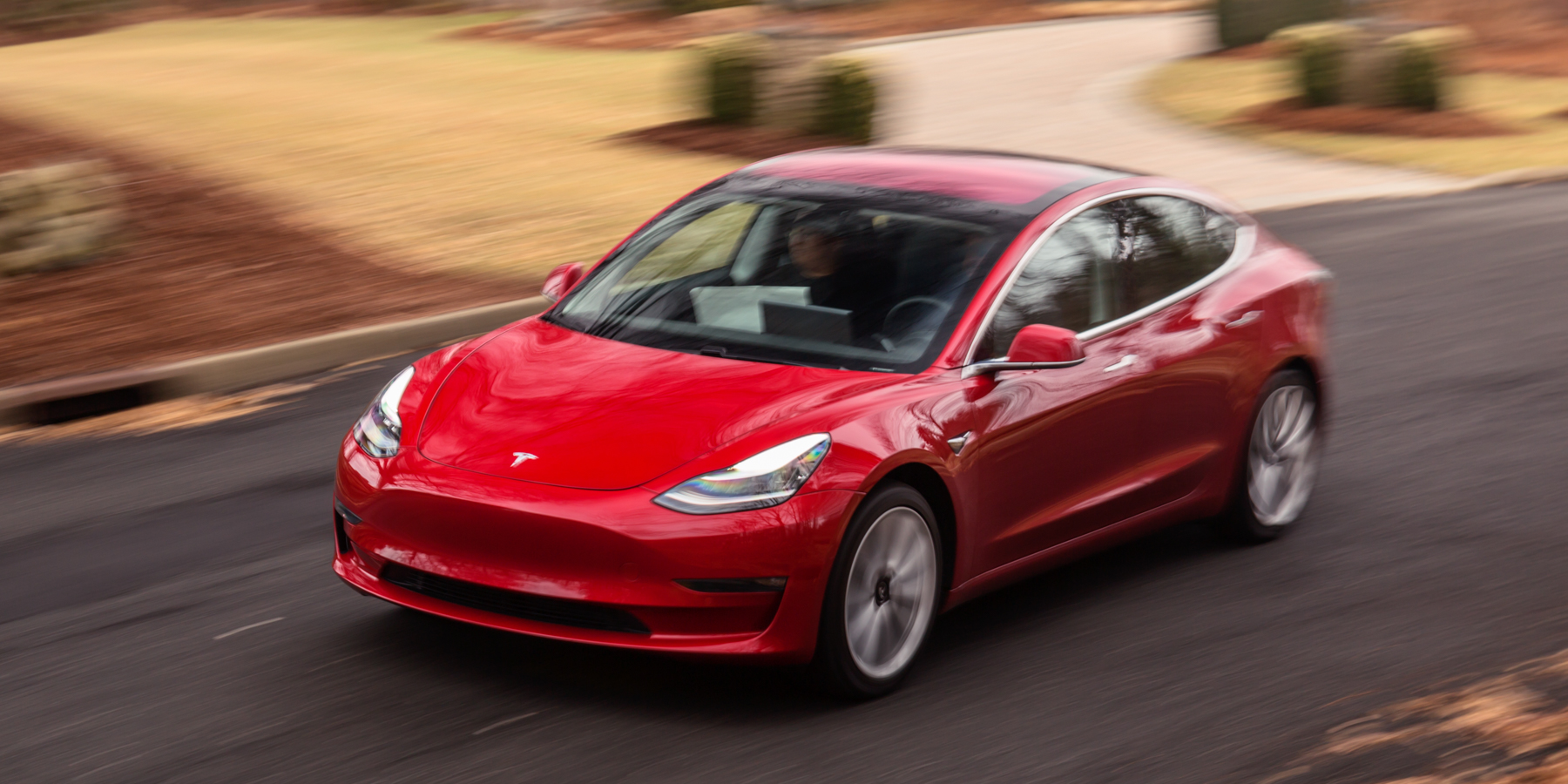- Five cars with automatic braking systems were stress-tested by the Insurance Institute for Highway Safety, a research group.
- One test found that Tesla’s Model 3 and Model S vehicles performed the worst, behind a BMW, a Volvo, and a Mercedes.
- The five cars were required to drive toward a stationary object with adaptive cruise control turned off and only automatic braking on. The two Teslas were the only ones that failed to stop in time and that hit the object, the IIHS said.
- In other tests, the Teslas performed better, though the Model 3 was described as overly cautious when braking.
A new test of five cars’ automatic braking systems found some worrying problems with the technology, and two Tesla models were the worst performers.
The tests by the Insurance Institute for Highway Safety, a research group, found that some driver-assist systems might not notice stopped vehicles and could even steer cars into a crash rather than away from it. It published the results in a Tuesday report.
In one test, the five cars drove at 31 mph toward a stationary object with the adaptive cruise control turned off and automatic braking on. The models all had automatic emergency braking systems deemed “superior” by the IIHS. They were:
- A 2017 BMW 5 Series with the Driving Assistant Plus function.
- A 2017 Mercedes-Benz E-Class with Drive Pilot.
- A 2018 Tesla Model 3 with Autopilot.
- A 2016 Tesla Model S with Autopilot.
- A 2018 Volvo S90 with Pilot Assist.
The IIHS said the Tesla Model 3 and Model S were the only two that didn’t stop in time and that hit the object.

In the same test with the adaptive cruise control turned on, the Tesla models decelerated gradually and braked earlier than the other cars to avoid the object, the institute found.
In fact, the IIHS said it also found the Model 3 was prone to "unnecessary or overly cautious braking."
While traveling a distance of 180 miles, the car unexpectedly slowed down 12 times - seven times after spotting tree shadows on the road and the others after detecting vehicles traveling toward it in another lane or crossing the road far ahead, the institute said.
"The braking events we observed didn't create unsafe conditions because the decelerations were mild and short enough that the vehicle didn't slow too much," said Jessica Jermakian, a senior research engineer at IIHS. "However, unnecessary braking could pose crash risks in heavy traffic, especially if it's more forceful.
"Plus, drivers who feel that their car brakes erratically may choose not to use adaptive cruise control and would miss out on any safety benefit from the system."
The IIHS found that the Tesla Model 3 performed the best when it came to staying within the lanes on curves and hills.

The IIHS highlighted the fatal crash of a Tesla Model X in March as evidence of the shortcomings of driver-assist systems.
The car, which had the Autopilot semiautonomous driver-assist software engaged, crashed into a highway barrier in Mountain View, California, and caught fire. The driver, Walter Huang, died after being taken to the hospital.
Tesla later released a statement saying Huang must not have been paying attention to the road, "despite the car providing multiple warnings to do so."
The IIHS said the crash "demonstrates the operational limits of advanced driver assistance systems and the perils of trusting them to do all of the driving, even though they can't."
Tesla declined to comment.

